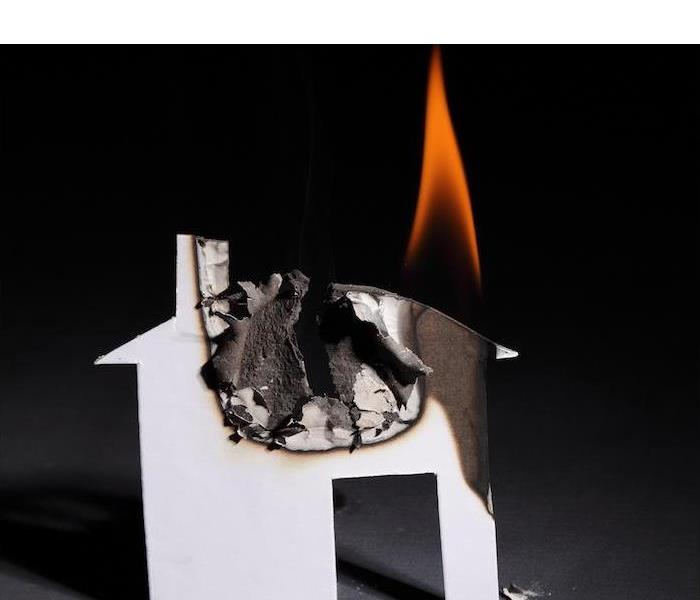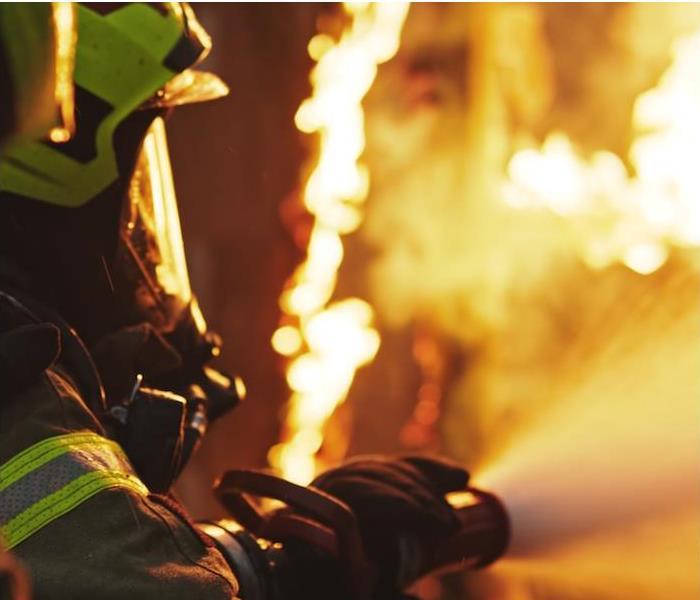Archived Fire Damage Blog Posts
Flames, Fun & Fire Safety
7/19/2022 (Permalink)
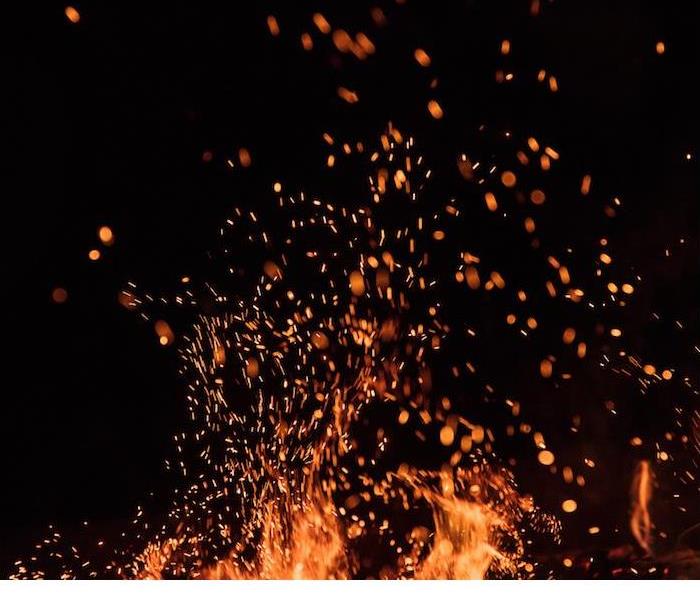 Summertime hazards
Summertime hazards
We are so busy nowadays, so when we have the opportunity to slow down and enjoy the benefits of the summer season, we jump on it! Family barbecues, s’mores and late-night bonfires are all staple activities to enjoy this season.
In order to create these fun times and memories, use of fire is required. From bonfires to grilled meals, it is important to practice good fire safety.
While we are doing our best, the risk of sparking a wildfire is always there. In fact, the National Park Service states that 85% of wildfires are started by humans.
Understanding the different risks that fire brings should only make you aware of the risks, not prevent you from firing up your grill for your latest fresh fish purchase or enjoying your portable fire pit. These simple measures below will ensure you are burning responsibly every time so you can continue to enjoy what you love most.
Fun and FireGrills, campfires and fireworks are disproportionately responsible for the start of home fires. When a fire breaks out due one of those reasons, it is typically due to user error.
Always have a responsible person tending to the flames and never leave a smoldering fire pit unattended. Even embers and sparks are enough to start a fire.
If you enjoy bonfires as a family, build them with approved wood only and light them with matches or lighters. Gas and other chemicals should never be an option when starting a fire.
Portable fire pits are also another popular way to enjoy a bonfire. If you own one of these pits, place it on a level and sturdy surface only and avoid overhangs and garages.
Approved firewood should be the only thing you burn once your fire is established, even though it can be tempting to casually burn any other debris while the fire is hot.
If you are a fireworks enthusiast, keep in mind that there are only two days throughout the year where firework use is legal and permitted in our area. Independence Day and New Year’s Eve are the only two holidays where you can legally enjoy pyrotechnics. Be safe and only use approved fireworks from reliable businesses.
Yard Waste and GasolineIf you live on a property that requires a significant amount of yard cleanup every season, it can be necessary to practice safe yard waste burning in order to keep your lawn clean and clear.
Before lighting your fire, check this live updating county map to see if we are in any current burn bans.
If we are not in a burn ban and you want to proceed with your project, check current weather conditions to make sure it will not be windy. If it is windy or been a really long time without rain, choose another activity for the day.
If you do find yourself in the aftermath of a garage or house fire, give SERVPRO of Tallahassee a call. We are trained in fire damage restoration and we provide quick and reliable service to all of our customers.
Burn safely outdoors. And save some chocolate for us! If you have experienced fire or smoke damage, contact us today to get restoration started faster.
Prevent Fires in Your Home Today | SERVPRO® of Tallahassee
6/16/2022 (Permalink)
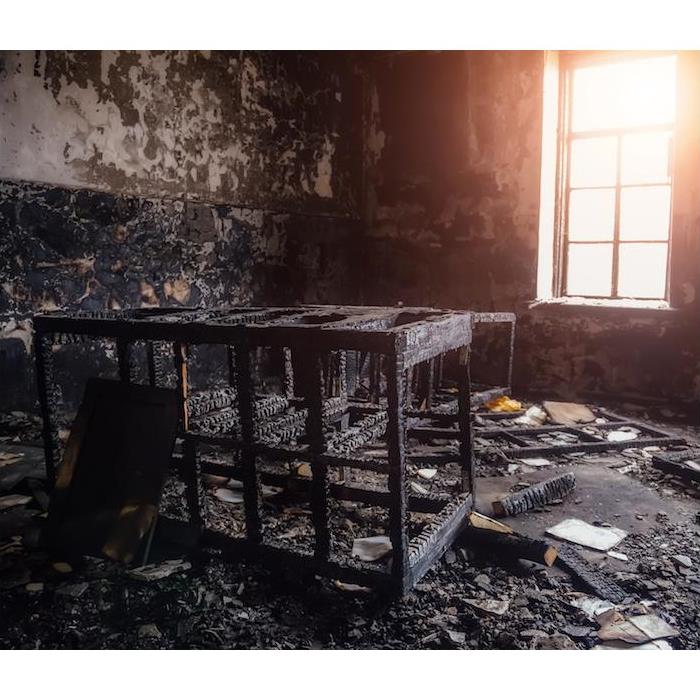 Fire Loss
Fire Loss
At this point in 2022, the American Red Cross has already responded to more than 20,000 house fires. This number only represents a small number of the home fires that have actually occurred so far this year in the United States.
While we know that smoke detectors continue to be the best way to prevent deaths and extensive damage due to fire, there are a few other easy ways to help minimize your risk of causing a house fire.
Clear That ClutterClutter can so easily become an issue in all of our homes, but did you know that the excess clutter in your home can be fuel to a fire? Piles of clothing, excess blankets or that pile of mail or newspapers that you have been meaning to pare down can all become an easy meal for a house fire.
Loose outlets are another common source of fire in the home. If you have recently noticed an outlet that is wiggly when you plug something in to it, call an electrician to come out and tighten it back down.
It is a much better idea to take care of the issue now rather than deal with the aftermath of a house fire later.
Create a Defensible Space With LandscapingYour yard is key in protecting your home from a fire that originates outside. By intentionally planting trees or shrubbery around your home, you can create a buffer between the fire and your house to give your local firemen more time to reach you before it consumes your walls.
Some states like California have actually imposed defensible zone requirements when landscaping due to their proven ability to slow outdoor fires. Even though we don’t live on the West Coast, we can still benefit from planting defensible spaces in Tallahassee.
In fact, the recent brush fire near Cold Harbor Drive proves that even a small spark can start a large problem. Defensible spaces would be helpful in this scenario to help slow an unexpected wildfire and the dangers they pose to your home.
Keep It Safe By Keeping It CleanSpring cleaning doesn’t simply benefit the functionality of your home—it can also help reduce fire risk. Give your stove and chimney a solid cleaning every season, and stay on top of your regular dusting to make sure you are giving your home the best chance to fend off a potential fire.
Our homes are our sanctuaries. They protect us from the elements and give us a sense of safety. It is easy to do these simple tasks regularly to make sure that your home will protect you and your family for years to come.
If you have experienced fire damage or want to learn more about our fire damage restoration services, contact us today. We’re here to act fast, 24⁄7.
The Building Blocks of Every Fire | SERVPRO® of Tallahassee
1/24/2022 (Permalink)
Sometimes all it takes to help a complicated concept make sense is a simple visual aid. That’s the case with fire—though the intricacies of fire can’t be explained in a moment’s time, there’s a visual aid that succinctly explains the origins of every fire.
Fire scientists call it the fire tetrahedron, and its four equal, triangular sides represent the four equal parts that comprise the start and proliferation of every fire, ever.
No, really—every fire boils down to these four elements, and every fire can be combatted by removing any one of them.
The 4 Things a Fire Needs to LiveFuel. If you’ve ever eaten food (and it seems pretty likely you have), then you can understand the concept of a fire’s fuel needs. For every fire to begin, there has to be a fuel source for the fire to consume.
Heat. Any potential fuel source has to be flammable, as a matter of course. And any flammable material has to be hot enough to ignite before a fire can occur.
Oxygen. In a similar way, a fire also needs oxygen to survive. The oxygen in the air around a fire feeds the process of oxidation necessary for combustion to begin and repeat.
Chemical Chain Reaction. All these things combine together in a chain reaction which, like objects in Newton’s third law, continues until acted upon by an outside force. What might those forces be? Let’s take a gander.
The 4 Ways to Stop a FireCool it. If a fire breaks out in your yard from an errant spark from the fall fire pit, you could wait for winter to cool the air down enough to restore thermal balance between the fire and the fuel…or you could simply dump a bucket of water on it.
Smother it. You know how those little ladybug fireworks are supposed to spin really fast and take off into the sky, but sometimes they only sit there and burn? When you instinctively stamp those things out, you’re actually smothering the fire by cutting off its air supply.
Starve it. The same thing that happens to people who don’t intake calories happens to fires that can’t intake fuel—they weaken, then stop.
Interrupt the chain reaction. These fires are working hard to maintain their reactive cycles, but certain gases have been developed, which, when introduced to the atmosphere around a fire, are able to remove links from the chain reaction and stop the catalytic motion. These are particularly helpful with electrical fires, for which water is unsafe as a coolant.
If the fire tetrahedron makes a wreck of your home or business, we’re ready around the clock to help you recov
Sometimes all it takes to help a complicated concept make sense is a simple visual aid. That’s the case with fire—though the intricacies of fire can’t be explained in a moment’s time, there’s a visual aid that succinctly explains the origins of every fire.
Fire scientists call it the fire tetrahedron, and its four equal, triangular sides represent the four equal parts that comprise the start and proliferation of every fire, ever.
No, really—every fire boils down to these four elements, and every fire can be combatted by removing any one of them.
The 4 Things a Fire Needs to LiveFuel. If you’ve ever eaten food (and it seems pretty likely you have), then you can understand the concept of a fire’s fuel needs. For every fire to begin, there has to be a fuel source for the fire to consume.
Heat. Any potential fuel source has to be flammable, as a matter of course. And any flammable material has to be hot enough to ignite before a fire can occur.
Oxygen. In a similar way, a fire also needs oxygen to survive. The oxygen in the air around a fire feeds the process of oxidation necessary for combustion to begin and repeat.
Chemical Chain Reaction. All these things combine together in a chain reaction which, like objects in Newton’s third law, continues until acted upon by an outside force. What might those forces be? Let’s take a gander.
The 4 Ways to Stop a FireCool it. If a fire breaks out in your yard from an errant spark from the fall fire pit, you could wait for winter to cool the air down enough to restore thermal balance between the fire and the fuel…or you could simply dump a bucket of water on it.
Smother it. You know how those little ladybug fireworks are supposed to spin really fast and take off into the sky, but sometimes they only sit there and burn? When you instinctively stamp those things out, you’re actually smothering the fire by cutting off its air supply.
Starve it. The same thing that happens to people who don’t intake calories happens to fires that can’t intake fuel—they weaken, then stop.
Interrupt the chain reaction. These fires are working hard to maintain their reactive cycles, but certain gases have been developed, which, when introduced to the atmosphere around a fire, are able to remove links from the chain reaction and stop the catalytic motion. These are particularly helpful with electrical fires, for which water is unsafe as a coolant.
If the fire tetrahedron makes a wreck of your home or business, we’re ready around the clock to help you recover.
Fast Action Is a Priority
12/20/2021 (Permalink)
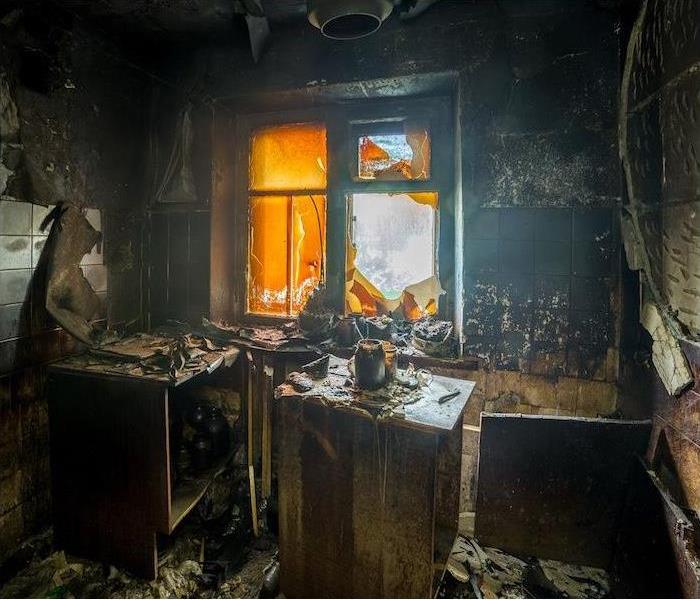 Fire Damage
Fire Damage
In the 21st century, there may be nothing we as a society have less patience for than waiting. With all-knowing satellites with high-speed internet access in the palms of so many hands, it’s no wonder we’ve grown a little impatient.
Waiting can be a necessary thing, even an important one in some cases. But when you have sudden, acute damage in your home due to a water issue, a fire or a weather event, one thing you certainly do not want to do is wait—not only because it’s inconvenient, but because being made to wait for service can add more damage to what’s already happening.
That’s why at SERVPRO we make sure you can always get the help you need—by providing all-hours emergency service, 365 days a year. We know your emergencies don’t keep office hours, and they don’t wait for a convenient Monday start date. So we make ourselves available at all times.
Having to wait can cost you, and here’s how.
After a fire. The flames come in and do their thing, but that’s not the end of the issue. Once the flames are cleared out, your home takes extended damage from soot and smoke, which instantly go to work staining and ruining carpets, walls, ceilings and possessions.
Left to sit for only a few hours, the work of soot and smoke becomes irreversible, and the only option for getting rid of them is total replacement of the affected surfaces.
After water damage. Waiting to clean up water damage will result in further damage to soaked surfaces, drywall and furniture, but that’s not its most potent threat. Only 48 hours after water invades, mold starts growing in moistened areas, unless the water is removed and the resulting humidity and moisture properly dealt with.
Furthermore, the damage from natural disasters, storms and freak weather events can be both sudden and catastrophic, and having access to quick service can prevent things from worsening or having damaging effects become permanent.
When disaster strikes, you can’t wait. SERVPRO’s 24-hour service makes fast action a reality.
When you need help after a home or business disaster, fast service is a priority, and there’s nobody faster or more prepared than SERVPRO. Call us anytime to take advantage of our 24-hour emergency service.
The Leading Causes of Home Fires | SERVPRO® of Tallahassee
11/5/2021 (Permalink)
Fires begin due to a number of causes, ranging from the careless to the intentional. And anytime heat sources are used or misused, there’s a risk of an errant flame taking off.
Despite all the advertising and education that’s gone into home fire safety and prevention, fires in the home still account for a quarter of all reported fires in the United States each year.
So let’s do some digging. What’s behind all these home fires, and how many of them could be prevented? Maybe this article will finally be the one that turns the tide.
Cooking. The overwhelming leader in home fires is cooking. Some cooking fires are avoidable, though—in fact, most are. The top cause of cooking fires? Unattended cooking. Taken into actionable steps, that means that the No. 1 thing you can do to make your house safer from fire is to be more careful when you cook, and never leave your stovetop or grill alone.
Heating equipment. Heating equipment causes the second highest number of home fires. While some of it is caused by equipment failure, much of this cause comes in the form of portable space heaters, which are prone to tipping over, overheating or overloading circuits. And of course, any heater is capable of setting fire to objects or materials that sit closer than three feet away.
Electrical fires. Some electrical fires hide behind your walls and are difficult to catch. But routine maintenance and inspection can reveal problems present and forthcoming—so can responsible use of extension cords, lighting and wattage limitations.
Intentional fires. It’s unnerving to think about it, but a surprising 28,000 intentional home fires are started each year. This doesn’t include fires started for a regular purpose that get out of hand, only fires started with the intent of burning a piece of property.
Smoking materials. Fires caused by smoking materials make up only 5% of home fires, but they make up more than a quarter of all home fire deaths. Smoking fires often happen because cigarettes are dropped or remain lit as individuals lie in bed, creating both fire and carbon monoxide hazards.
Regardless of the cause, SERVPRO is here for you if your home is affected by fire. Contact your local team today to see how we can help.



 24/7 Emergency Service
24/7 Emergency Service


